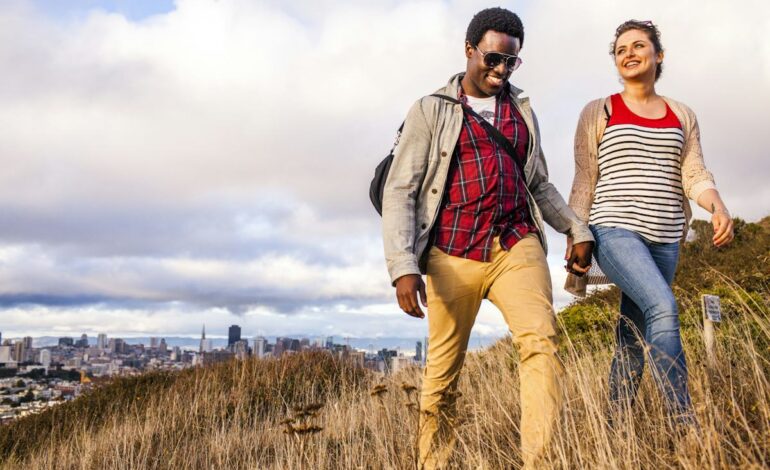Kedarkantha, nestled in the Garhwal Himalayas of Uttarakhand, India, is a popular trekking destination known for its panoramic views and enchanting beauty. Ideal for both beginners and seasoned trekkers, the Kedarkantha trek offers a unique blend of adventure and tranquility.
Table of Contents
Overview
- Location: Garhwal Himalayas, Uttarakhand, India
- Altitude: Approximately 12,500 feet
- Trek Duration: 4-6 days
- Difficulty Level: Easy to moderate
- Best Time to Visit: December to April for snow treks; May to June for lush green landscapes
Trek Highlights
- Sankri: The base camp of the trek, Sankri, is a quaint village that offers a glimpse into the Himalayan lifestyle.
- Juda-ka-Talab: A serene lake en route, surrounded by pine and oak forests, offering a perfect camping spot.
- Summit Views: The summit of Kedarkantha provides a 360-degree view of famous peaks such as the Swargarohini, Bandarpoonch, and Black Peak.
- Flora and Fauna: The trail is rich in flora and fauna, providing trekkers with an opportunity to witness the diverse Himalayan ecosystem.
Route and Trek Itinerary
Day 1: Dehradun to Sankri (Base Camp)
- Distance: 220 km drive
- Activities: Acclimatization and orientation
- Stay: Guesthouse/homestay in Sankri
Day 2: Sankri to Juda-ka-Talab
- Trek Distance: 4 km
- Highlights: Dense pine forests, Himalayan flora and fauna
- Stay: Camp near the lake
Day 3: Juda-ka-Talab to Kedarkantha Base
- Trek Distance: 4 km
- Highlights: Meadows, clear night skies
- Stay: Camp at base
Day 4: Base to Kedarkantha Peak; descend to Hargaon
- Trek Distance: 6 km
- Highlights: 360-degree Himalayan views, sunrise from the peak
- Stay: Camp in Hargaon
Day 5: Hargaon to Sankri
- Trek Distance: 6 km
- Activities: Descend through dense forests
Day 6: Sankri to Dehradun
- Return drive to Dehradun
Best Time to Trek Kedarkantha: Seasonal Insights
The trek’s allure lies in its accessibility and the distinct experiences it offers across different seasons, making it crucial to choose the right time for your adventure.
Winter (December to April): Winter transforms Kedarkantha into a magical winter wonderland, ideal for those seeking the thrill of snow trekking. The landscape is blanketed in a pristine layer of snow, offering enchanting views. This season is particularly famous for its snow-covered trails and the serene beauty of the frozen Juda-Ka-Talab, a high-altitude lake. Trekking in winter can be challenging due to the cold temperatures, which can drop to sub-zero levels, but the experience of camping in the snow and witnessing the Himalayan range in its winter glory is unparalleled.
Spring (April to June): As the snow begins to melt, spring brings a burst of colors to the Kedarkantha trek. This is the time when the flora starts to bloom, painting the landscape in vibrant hues. The weather is pleasant, with moderate temperatures making the trek comfortable. This season is perfect for those who enjoy witnessing the Himalayas’ diverse flora and want to avoid the extreme cold of winter.
Monsoon (July to September): The monsoon season is less recommended for Kedarkantha due to the heavy rains making the trails slippery and challenging. However, for the most intrepid trekkers, this season unveils a lush, green side of the Himalayas, with waterfalls and streams at their fullest.
Autumn (October to November): Post-monsoon, the landscape is rejuvenated, and the skies clear up, offering some of the best mountain views. The weather during this time is cool and pleasant, ideal for trekking. The forests are lush, and the air is crisp, making it a great time for photography enthusiasts and nature lovers.
Each season in Kedarkantha presents a unique experience. While winter offers a snowy wonderland, spring and autumn provide pleasant trekking conditions with stunning vistas. Your choice depends on what you seek from the trek – be it snow-laden trails, blooming landscapes, or clear mountain views.
Comparing Kedarkantha with Other Himalayan Treks: A Trekker’s Perspective
Comparing Kedarkantha with other Uttarakhand treks offers a fascinating insight into the diverse trekking experiences available in the Indian Himalayas. Each trek has its unique allure, challenges, and landscapes, catering to a range of preferences and skill levels.
Kedarkantha vs. Har Ki Dun
- Difficulty Level: Kedarkantha is considered a moderate trek and is often recommended for beginners and those with limited trekking experience. In contrast, Har Ki Dun, while still accessible to beginners, is slightly more challenging due to its longer duration and more rugged terrain.
- Scenery: Kedarkantha is renowned for its stunning panoramic views of the snow-clad Himalayan peaks and picturesque campsites. Har Ki Dun offers a more secluded experience, taking trekkers through ancient villages, lush meadows, and dense forests, showcasing a different aspect of Himalayan beauty.
- Best Time to Trek: Both treks are accessible in winter, offering a beautiful snow trekking experience. However, Har Ki Dun’s route can become quite challenging in heavy snow, making Kedarkantha a preferred choice for winter trekking.
Kedarkantha vs. Valley of Flowers
- Terrain and Flora: While Kedarkantha is primarily known for its snow-capped peaks and pine forests, the Valley of Flowers is famous for its vibrant alpine flowers and diverse flora, especially during the monsoon season.
- Trekking Experience: Kedarkantha offers a more traditional trekking experience with camping and mountain views. The Valley of Flowers, a UNESCO World Heritage site, is more of a nature walk, focusing on the extraordinary biodiversity.
- Accessibility: Kedarkantha is more accessible year-round, while the Valley of Flowers is best visited from July to September when the flowers are in full bloom.
Kedarkantha vs. Triund Trek
- Duration and Difficulty: The Triund trek is shorter and less challenging than Kedarkantha, making it ideal for those looking for a quick Himalayan getaway.
- Views and Ambience: Triund offers stunning views of the Kangra valley and the Dhauladhar ranges, whereas Kedarkantha provides a 360-degree view of famous Himalayan peaks. Triund is also known for its vibrant trekking culture and is more crowded compared to the serene tranquility of Kedarkantha.
- Altitude: Kedarkantha reaches a higher altitude, making it a better option for those looking to experience high-altitude trekking.
Preparing for High Altitude: Health and Safety Tips for Kedarkantha Trekkers
Preparing for a high-altitude trek like Kedarkantha is crucial, as it involves acclimatizing to lower oxygen levels and dealing with potentially challenging terrain. Here are health and safety tips to ensure a successful and enjoyable trekking experience:
- Acclimatization: Gradual acclimatization is key to preventing altitude sickness. Spend a day or two at a moderately high altitude before beginning your ascent to Kedarkantha. This helps your body adjust to the lower oxygen levels.
- Physical Fitness: High-altitude trekking demands good physical fitness. Engage in cardiovascular exercises like running, cycling, or swimming several weeks before your trek. Strengthen your leg muscles with squats and lunges, as they will be extensively used during the trek.
- Hydration: Staying hydrated is essential at high altitudes, but avoid overconsumption which can lead to water intoxication. Aim to drink 2-3 liters of water daily, but listen to your body’s needs.
- Nutrition: Eat a balanced diet rich in carbohydrates, as they are easier to metabolize at higher altitudes and provide essential energy. Include proteins and healthy fats in your meals for sustained energy.
- Altitude Sickness Awareness: Be aware of the symptoms of altitude sickness, which include headache, nausea, dizziness, and fatigue. If you experience these symptoms, do not ascend further until they have subsided. Descend if symptoms worsen.
- Carry Essential Medication: Pack medication for altitude sickness, like Acetazolamide (Diamox), as well as basic first-aid items. Also, carry personal medications, if any.
- Dress Appropriately: Wear layers to manage changing temperatures. Include a base layer, an insulating layer, and a waterproof and windproof outer layer. Also, carry a good quality hat, gloves, and sunglasses for protection against sun and cold.
- Trek Slowly: Maintain a slow and steady pace to avoid exhaustion. This also helps in acclimatization.
- Sleep Well: High altitude can disrupt sleep, so try to maintain a regular sleep schedule. This helps in better acclimatization and overall health.
- Avoid Alcohol and Smoking: Both can exacerbate altitude sickness and dehydration. It’s best to avoid them completely before and during the trek.
- Informative Briefing: Pay attention to all the information and instructions provided by your guide. They are experienced and can offer valuable advice on coping with high altitudes.
- Mental Preparation: A positive mindset and mental resilience can greatly impact your trekking experience. Be prepared for challenges but also enjoy the journey.
Packing Essentials for Kedarkantha: What’s In My Backpack?
Packing efficiently for the Kedarkantha trek is essential for a comfortable and safe experience. Here’s a comprehensive list of essentials to include in your backpack:
- Backpack: A 50-60L backpack with comfortable straps and good back support.
- Clothing:
- Base Layers: Thermal inners (top and bottom).
- Trekking Pants: At least 2 pairs of quick-dry trekking pants.
- Insulating Layers: Fleece or woolen sweaters and jackets.
- Outer Layer: A waterproof and windproof jacket.
- Additional: T-shirts, extra underwear, and socks.
- Footwear:
- Trekking Shoes: Waterproof, high-ankle trekking shoes with good grip.
- Camp Shoes: Lightweight shoes or sandals for relaxation at the campsite.
- Gaiters: Useful in winter to prevent snow from entering your shoes.
- Headgear:
- Hat: A sun hat for protection against UV rays.
- Beanie: A woolen beanie or balaclava for warmth.
- Handwear:
- Gloves: Waterproof and insulated gloves for cold conditions.
- Sleeping Gear:
- Sleeping Bag: Choose one suitable for temperatures up to -10°C.
- Sleeping Bag Liner: Adds an extra layer of warmth and hygiene.
- Personal Kit:
- Sunscreen: SPF 50+ for high UV protection.
- Lip Balm: With SPF to prevent chapped lips.
- Moisturizer: To combat skin dryness.
- Personal Medications and a basic first-aid kit.
- Toiletries: Toothbrush, toothpaste, wet wipes, toilet paper, hand sanitizer.
- Hydration:
- Water Bottles: At least 2 liters capacity or a hydration bladder.
- Water Purification: Tablets or a portable water filter.
- Nutrition:
- Snacks: Energy bars, nuts, dried fruits, and chocolates.
- Meals: If self-catering, pack easy-to-cook and light-weight meals.
- Accessories:
- Sunglasses: UV-protection sunglasses.
- Trekking Pole: Reduces strain on knees and improves balance.
- Headlamp: With extra batteries.
- Camera: With spare batteries/memory cards.
- Navigation Tools: Maps, compass, or a GPS device (if familiar with its use).
- Plastic Bags: For waste management and keeping things dry.
- Emergency Supplies: Whistle, multi-tool, duct tape, lighter or matches.
- Documentation: ID, permits (if required), and emergency contact information.
Conclusion
the Kedarkantha trek stands as a spectacular journey through the heart of the Garhwal Himalayas, offering a blend of breathtaking natural beauty, challenging yet accessible terrain, and a deep immersion into the tranquil wilderness. Whether you’re a seasoned trekker or a beginner eager to experience high-altitude trekking, Kedarkantha caters to all with its unique blend of snow-clad paths in the winter, vibrant flora in the spring, and crystal-clear mountain vistas post-monsoon. The trek not only challenges your physical limits but also offers a serene escape to rejuvenate amidst nature. By adequately preparing, respecting local customs and the environment, and staying mindful of health and safety, trekkers can ensure a rewarding and memorable experience on the Kedarkantha trek. This journey is not just about reaching the summit; it’s about embracing the spirit of the mountains, understanding the rhythm of nature, and discovering a new perspective on life.


